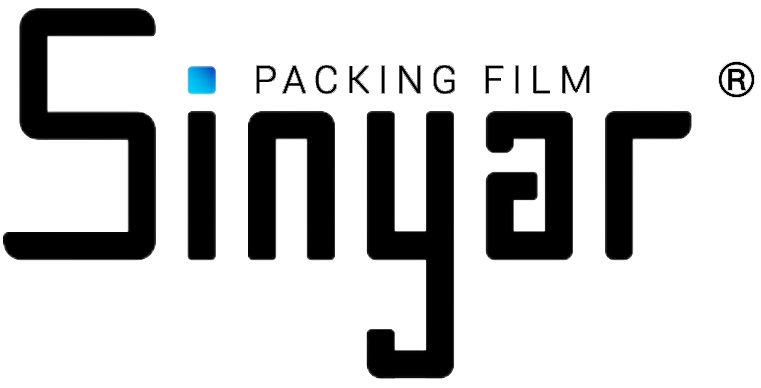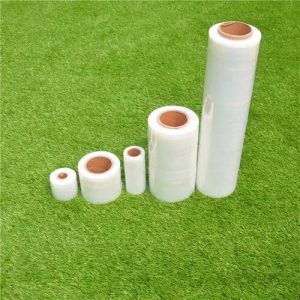In today’s world, the issue of plastic waste has become a pressing concern. As we strive to find sustainable solutions, one area that has gained significant attention is the use of PCR (Post-Consumer Recycled) recyclable stretch film in packaging applications. PCR recyclable stretch film refers to the process of recycling plastic waste into new packaging materials, reducing the reliance on virgin plastics and minimizing the environmental impact.
The demand for PCR recyclable stretch film has grown rapidly in recent years, driven by increasing consumer awareness of environmental issues and the need for more sustainable packaging options. This has led to the development of advanced technologies and innovative solutions to transform plastic waste into high-quality packaging materials.
The benefits of using PCR recyclable stretch film are manifold. Firstly, it helps to reduce the consumption of fossil fuels and energy-intensive processes associated with the production of virgin plastics. By utilizing recycled materials, we can significantly decrease greenhouse gas emissions and mitigate the negative effects of climate change.
Secondly, PCR recyclable stretch film promotes the circular economy by closing the loop on plastic waste. Instead of ending up in landfills or polluting our oceans, plastic waste is collected, processed, and transformed into new packaging materials. This not only conserves valuable resources but also reduces the overall environmental impact of plastic packaging.
Furthermore, PCR recyclable stretch film offers a cost-effective solution for businesses. By incorporating recycled materials into their packaging, companies can demonstrate their commitment to sustainability while also potentially reducing production costs. This can lead to increased customer loyalty and brand reputation, as consumers are increasingly seeking out eco-friendly products.
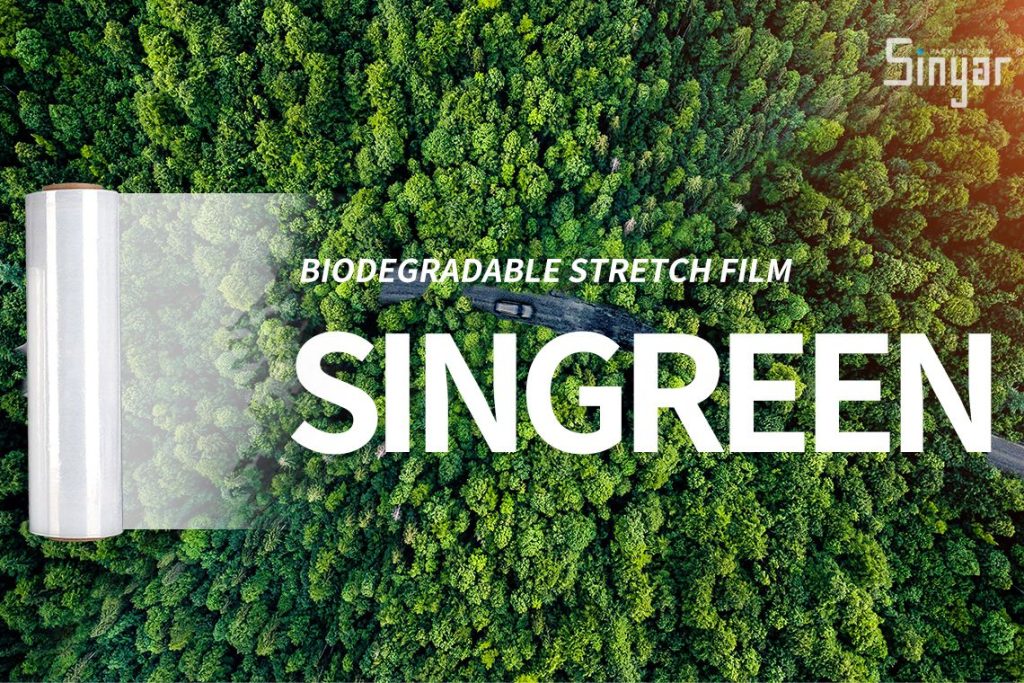
However, implementing PCR recyclable stretch film does come with its challenges. One of the main obstacles is ensuring a consistent supply of high-quality recycled materials. The collection and sorting of plastic waste can be complex and require efficient infrastructure and processes. Additionally, there is a need for standardized quality control measures to ensure the performance and safety of PCR recyclable stretch film in various applications.
In this article, we will explore the benefits and challenges of using PCR recyclable stretch film in packaging, as well as the current applications and future trends in this field. We will also discuss the advances in PCR recyclable stretch film technology and the opportunities it presents for businesses and the environment. By understanding the potential of PCR recyclable stretch film, we can pave the way for a more sustainable and circular approach to packaging.
Benefits of PCR recyclable stretch film
PCR (Post-Consumer Recycled) recyclable stretch film offers a range of benefits that make it a valuable choice for packaging and sustainability efforts. As businesses strive to reduce their environmental impact and meet sustainability goals, PCR recyclable stretch film provides a solution that combines both functionality and eco-friendliness.
Environmental Impact: One of the primary benefits of PCR recyclable stretch film is its positive impact on the environment. By using post-consumer recycled materials, this type of film helps to reduce the amount of plastic waste that ends up in landfills or oceans. It promotes a circular economy by reusing materials that would otherwise go to waste, reducing the need for virgin plastic production.
Resource Conservation: PCR recyclable stretch film helps to conserve valuable resources such as energy and water. The production of virgin plastic requires significant amounts of both resources, contributing to greenhouse gas emissions and water scarcity. By utilizing recycled materials, PCR recyclable stretch film reduces the demand for new plastic production and conserves these precious resources.
Cost Savings: Implementing PCR recyclable stretch film can lead to cost savings for businesses. Recycled materials are often more cost-effective compared to virgin materials, making PCR recyclable stretch film a financially viable option. Additionally, some regions offer incentives or tax benefits for businesses that use recycled materials, further reducing costs.
Customer Appeal: In today’s market, consumers are increasingly conscious of the environmental impact of the products they purchase. By using PCR recyclable stretch film, businesses can enhance their brand image and appeal to environmentally conscious consumers. This can lead to increased customer loyalty and a competitive edge in the market.
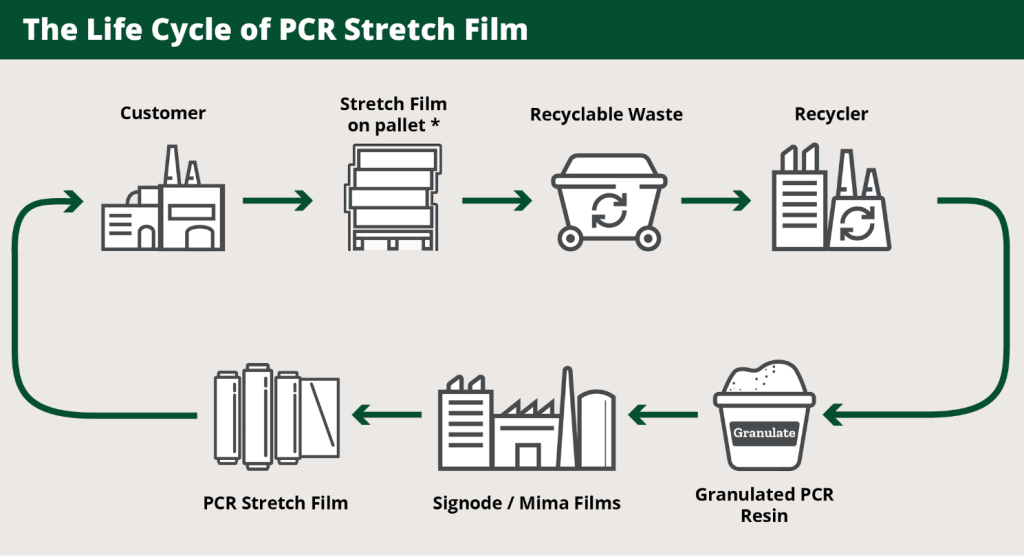
Regulatory Compliance: Many countries and regions are introducing regulations and policies to promote the use of recycled materials and reduce plastic waste. By adopting PCR recyclable stretch film, businesses can ensure compliance with these regulations and demonstrate their commitment to sustainability. This can help businesses avoid penalties and maintain a positive reputation.
Versatility: PCR recyclable stretch film can be used in a wide range of applications, making it a versatile packaging solution. It can be used for wrapping pallets, securing goods during transportation, and protecting products from damage. Its flexibility and strength make it suitable for various industries, including logistics, manufacturing, and retail.
In conclusion, PCR recyclable stretch film offers numerous benefits for businesses and the environment. It helps to reduce plastic waste, conserve resources, save costs, appeal to customers, ensure regulatory compliance, and provides versatility in packaging applications. By incorporating PCR recyclable stretch film into their operations, businesses can contribute to a more sustainable future while enjoying the advantages it brings.
Challenges in Implementing PCR Recyclable Stretch Film
Implementing PCR recyclable stretch film, or post-consumer recycled stretch film, comes with its own set of challenges. While PCR recyclable stretch film offers numerous benefits, such as reducing plastic waste and promoting sustainability, several obstacles need to be addressed for its successful implementation.
Limited Supply and Quality Control
One of the main challenges in implementing PCR recyclable stretch film is the limited supply of post-consumer recycled materials. The availability of high-quality PCR recyclable stretch film can be inconsistent, making it difficult for businesses to rely solely on recycled materials for their packaging needs. This limited supply can result in higher costs and inconsistencies in the quality of the final product.
To overcome this challenge, it is crucial to establish a robust supply chain for post-consumer recycled materials. This can involve partnering with recycling facilities and implementing strict quality control measures to ensure the consistency and reliability of the PCR recyclable stretch film produced.
Market Demand and Price Competitiveness
Another challenge is the market demand and price competitiveness of PCR recyclable stretch film compared to traditional stretch film made from virgin materials. While there is a growing demand for sustainable packaging solutions, price considerations often play a significant role in the purchasing decisions of businesses.
PCR recyclable stretch film may be priced higher than traditional stretch film due to the additional costs associated with recycling and processing post-consumer materials. This price difference can deter some businesses from adopting PCR recyclable stretch film, especially if they are operating on tight budgets or have limited awareness of the long-term benefits of sustainable packaging.

To address this challenge, it is essential to educate businesses about the environmental and economic advantages of PCR recyclable stretch film. Emphasizing the positive impact on brand reputation, customer loyalty, and sustainability goals can help justify the slightly higher price point. Additionally, implementing government incentives or subsidies for businesses that choose to use PCR recyclable stretch film can further encourage its adoption.
Technical Limitations and Performance
PCR recyclable stretch film may also face technical limitations and performance issues compared to traditional stretch film. The properties of recycled materials can vary, affecting the strength, durability, and stretchability of the final product. This can result in challenges during the application and handling of PCR recyclable stretch film, potentially leading to increased product damage or inefficiencies in the packaging process.
To overcome these challenges, it is crucial to invest in research and development to improve the performance and consistency of PCR recyclable stretch film. Collaborating with material scientists and packaging experts can help identify ways to enhance the mechanical properties of recycled materials and ensure that PCR-recyclable stretch film meets or exceeds the performance standards of traditional stretch film.
In conclusion, while PCR recyclable stretch film offers numerous benefits, its successful implementation requires addressing challenges related to limited supply and quality control, market demand and price competitiveness, and technical limitations and performance. By investing in the development of a robust supply chain, educating businesses about the long-term benefits, and continuously improving the performance of PCR recyclable stretch film, we can overcome these challenges and move towards a more sustainable packaging solution.
Current Applications of PCR recyclable stretch film
PCR (Post-Consumer Recycled) recyclable stretch film is gaining popularity in various industries due to its sustainable and environmentally friendly properties. This innovative material is being utilized in a range of applications, offering both economic and environmental benefits.
One of the primary applications of PCR recyclable stretch film is in the packaging industry. It is commonly used for wrapping and securing goods during transportation and storage. The use of PCR recyclable stretch film in packaging helps companies reduce their carbon footprint and minimize waste generation. By incorporating recycled materials into the production process, businesses can contribute to a circular economy and promote sustainability.
In the agriculture sector, PCR recyclable stretch film is being used for baling and wrapping hay and silage. This application provides farmers with a cost-effective and eco-friendly solution for preserving and protecting their crops. The use of PCR recyclable stretch film in agriculture not only reduces the reliance on virgin plastic materials but also helps to minimize the environmental impact of agricultural practices.
Another emerging application of PCR recyclable stretch film is in the construction industry. It is being used for wrapping and securing building materials, such as lumber and insulation. The use of PCR recyclable stretch film in construction not only ensures the safe transportation of materials but also contributes to sustainable building practices. By incorporating recycled materials into the construction process, builders can reduce waste and promote a greener approach to infrastructure development.
In addition to packaging, agriculture, and construction, PCR recyclable stretch film is finding applications in various other industries. It is being used for palletizing goods, bundling products, and even in artistic and creative endeavors. The versatility of PCR recyclable stretch film allows it to be adapted to different requirements and specifications, making it a valuable resource for businesses across multiple sectors.
The growing demand for sustainable packaging solutions and the increasing awareness of environmental issues have paved the way for the widespread adoption of PCR recyclable stretch film. As more companies prioritize sustainability and seek alternatives to traditional plastic materials, the market for PCR recyclable stretch film is expected to expand further.
In conclusion, PCR recyclable stretch film is being used in a range of applications, including packaging, agriculture, construction, and more. Its sustainable properties and ability to reduce waste make it an attractive choice for businesses looking to minimize their environmental impact. As the demand for eco-friendly solutions continues to grow, PCR recyclable stretch film is poised to play a significant role in promoting sustainability across various industries.
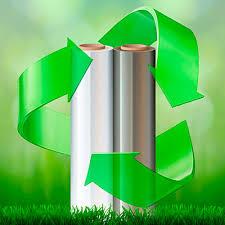
Advances in PCR recyclable stretch film Technology
The technology behind PCR (Post-Consumer Recycled) recyclable stretch film has been rapidly advancing in recent years, bringing new opportunities for sustainable packaging solutions. As the demand for environmentally friendly alternatives continues to grow, manufacturers have been investing in research and development to improve the performance and quality of PCR recyclable stretch film.
One of the key advancements in PCR recyclable stretch film technology is the development of more efficient recycling processes. Traditional recycling methods often result in a loss of material properties, making it challenging to produce high-quality PCR recyclable stretch film. However, with the introduction of advanced sorting and cleaning technologies, manufacturers can now produce PCR recyclable stretch film that meets or even exceeds the performance of virgin materials.
In addition to improved recycling processes, innovations in material science have also played a crucial role in advancing PCR recyclable stretch film technology. Researchers have been exploring new polymer blends and additives that enhance the strength, flexibility, and durability of PCR recyclable stretch film. These advancements have allowed manufacturers to create PCR recyclable stretch film that is suitable for a wide range of applications, from industrial packaging to consumer goods.
Furthermore, the development of advanced testing and quality control methods has enabled manufacturers to ensure the consistency and reliability of PCR recyclable stretch film. Through rigorous testing and analysis, manufacturers can verify the material properties, such as tensile strength, elongation, and tear resistance, to meet the specific requirements of different industries. This level of quality control has instilled confidence in businesses and consumers alike, driving the adoption of PCR recyclable stretch film as a sustainable packaging solution.
Another significant advancement in PCR recyclable stretch film technology is the integration of digital solutions and traceability systems. With the help of blockchain technology and smart sensors, manufacturers can now track the entire lifecycle of PCR recyclable stretch film, from the collection of post-consumer waste to the production of the final product. This level of transparency not only ensures the integrity of the recycling process but also provides valuable data for optimizing recycling operations and improving sustainability practices.
As the demand for PCR recyclable stretch film continues to grow, the industry is also exploring new avenues for innovation. Researchers are investigating the use of alternative feedstocks, such as agricultural waste or biodegradable materials, to further enhance the environmental credentials of PCR recyclable stretch film. Additionally, advancements in additive manufacturing techniques, such as 3D printing, hold the potential to revolutionize the production of PCR recyclable stretch film, enabling customized and on-demand packaging solutions.
In conclusion, the advances in PCR recyclable stretch film technology have opened up new possibilities for sustainable packaging solutions. Through improved recycling processes, material science innovations, quality control measures, and digital traceability systems, manufacturers can now produce high-quality PCR recyclable stretch film that meets the performance requirements of various industries. As the industry continues to evolve, further advancements and innovations are expected, driving the widespread adoption of PCR recyclable stretch film and contributing to a more sustainable future.
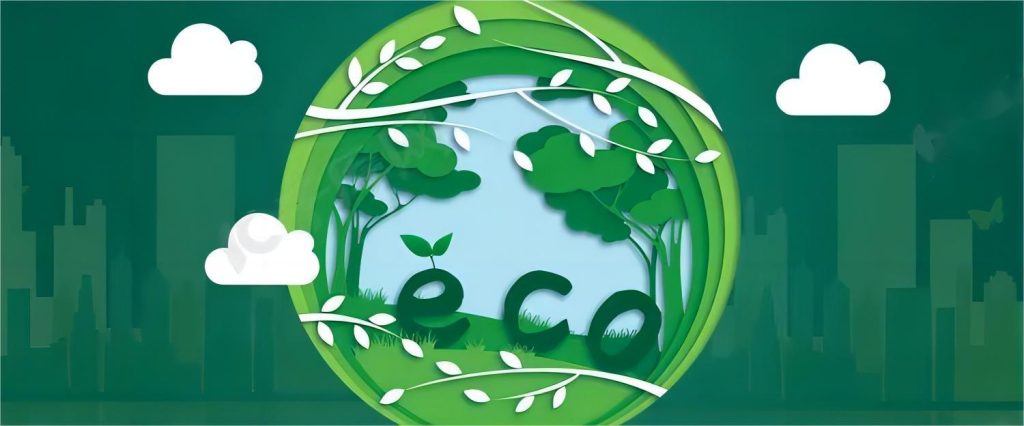
Future Trends and Opportunities for PCR Recyclable Stretch Film
The future of PCR recyclable stretch film looks promising, as the demand for sustainable packaging solutions continues to grow. With increasing awareness about the environmental impact of plastic waste, businesses and consumers are actively seeking alternatives that minimize their carbon footprint. This presents significant opportunities for the development and adoption of PCR recyclable stretch film in various industries.
One of the key trends we can expect to see in the future is the expansion of PCR recyclable stretch film applications. As technology advances and more efficient recycling processes are developed, the quality and performance of PCR recyclable stretch film will continue to improve. This opens up opportunities for its use in a wide range of packaging applications, including food and beverage, consumer goods, and industrial packaging. PCR recyclable stretch film can be used for wrapping pallets, securing goods during transportation, and protecting products from damage. Its versatility and sustainability make it an attractive choice for businesses looking to reduce their environmental impact.
Another trend we can expect to see is the development of innovative PCR recyclable stretch film technologies. Researchers and manufacturers are constantly exploring new ways to improve the recycling process and increase the amount of recycled content in packaging materials. This includes advancements in sorting and separation technologies, as well as the development of new recycling methods specifically tailored for PCR recyclable stretch film. These innovations will not only enhance the quality and performance of PCR recyclable stretch film but also increase its cost-effectiveness, making it a more viable option for businesses.
In addition, the growing demand for sustainable packaging solutions is driving collaborations and partnerships across the supply chain. Companies are recognizing the importance of working together to create a circular economy for plastic packaging. This involves establishing robust collection and recycling systems, as well as developing standards and certifications for PCR recyclable stretch film. Collaborations between packaging manufacturers, recycling facilities, and end-users will be crucial in driving the adoption of PCR recyclable stretch film and ensuring its long-term success.
Furthermore, regulatory initiatives and government policies aimed at reducing plastic waste will create opportunities for PCR recyclable stretch film. Many countries and regions have already implemented or are planning to implement regulations that promote the use of recycled content in packaging materials. This will incentivize businesses to invest in PCR recyclable stretch film and incorporate it into their packaging strategies. Additionally, consumer demand for sustainable products and packaging will continue to drive the adoption of PCR recyclable stretch film, as more individuals prioritize eco-friendly choices.
In conclusion, the future of PCR recyclable stretch film looks promising, with increasing opportunities for its application and advancements in technology. As businesses and consumers become more conscious of their environmental impact, the demand for sustainable packaging solutions will continue to rise. By embracing PCR recyclable stretch film and collaborating across the supply chain, we can create a more sustainable future for packaging and contribute to the circular economy.
